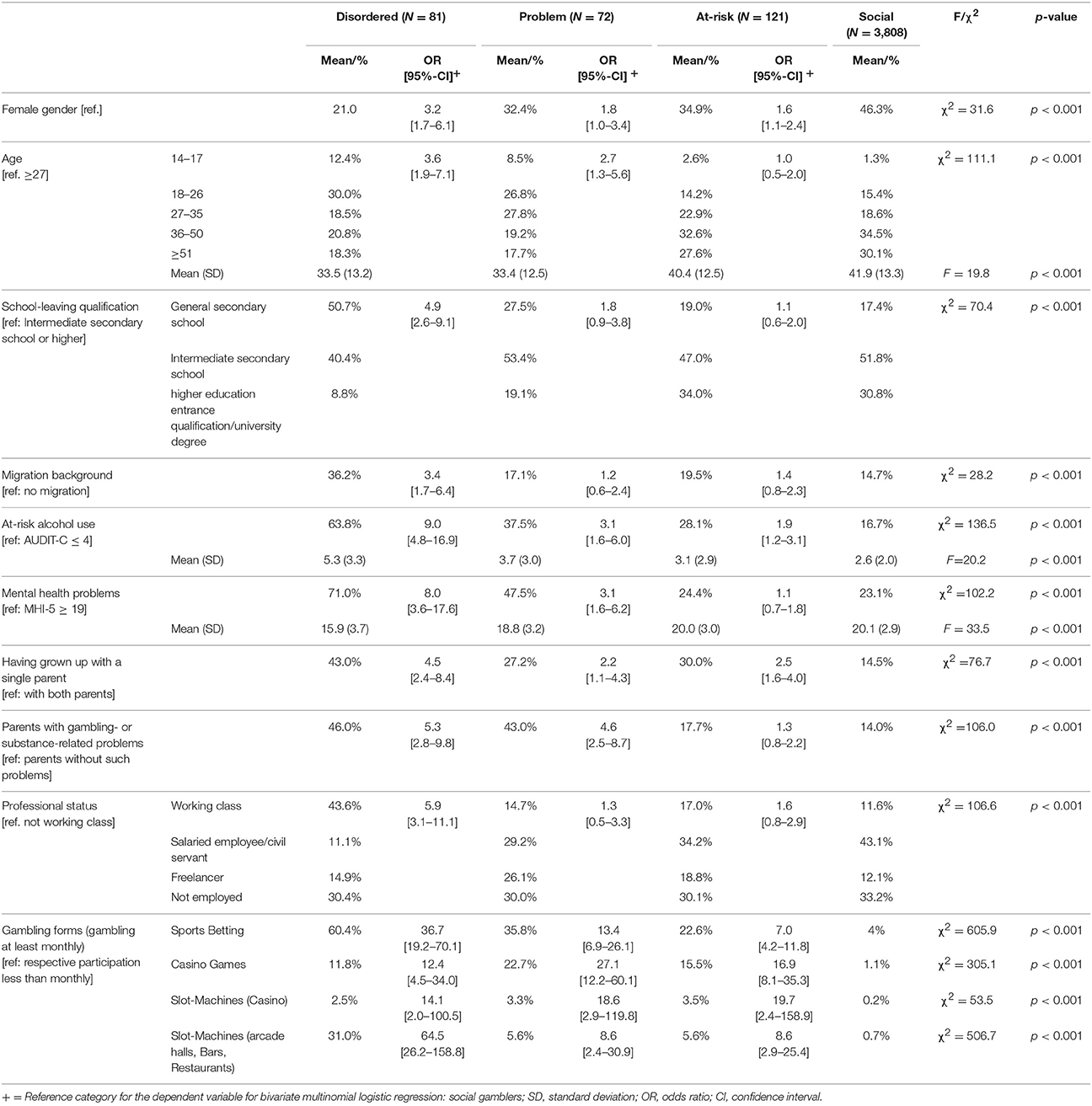Singapore Problem Gambling Statistics
- Singapore Problem Gambling Statistics Worldwide
- Singapore Problem Gambling Statistics In America
- Singapore Problem Gambling Statistics Since
- Singapore Problem Gambling Statistics Articles
The new casino gambling laws has provided a number of social safeguards to prevent Singapore citizens and permanent residents from becoming problem gamblers. These social safeguards include entry levies, credit and loss limits, self-exclusion order and protection of minors (MCYS 2005). World gambling statistics show that around 26% of the population gamble. That means around 1.6 billion people worldwide gamble and 4.2 billion gamble at least once every year. Singapore’s National Council on Problem Gambling says callers to its helpline have more than doubled since the first casino opened; 520 calls were made to the helpline in March, compared to an. Learning about the loss of savings, property, or belongings due to a gambling problem can tear families apart. The financial stress can also make it difficult for families to provide basic needs for themselves. Getting Gambling Addiction Treatment. When it comes to treatment for gambling addiction Singapore has some options.
Crime in Singapore is extremely low compared to other developed nations and the world in general.
Police statistics released in the year 2016 suggested 33,608 criminal cases from a population of more than five and a half million, with most of them being cybercrimes. Between the years 2014 and 2015, there was an observed statistical decrease in violent or serious property offenses, housebreaking, theft, and unlicensed moneylending harassment.
As suggested by foreign travel advisory from the United Kingdom, petty crime such as pickpocketing and street theft are extremely rare in Singapore. Violent crime is also deemed as extremely rare and almost non-existent. Threats of terrorism remain a major concern, as is the case with most developed countries.[1] As a constant reminder from consulars to possible drug traffickers such as the Australian Department of Foreign Affairs and Trade, penalties for drug offences such as trafficking in Singapore remain severe and include capital punishment for certain cases of possession.[2]

Sex trafficking[edit]
Sex trafficking in Singapore is a significant problem. Singaporean and foreign women and girls have been forced into prostitution in brothels and been physically and psychologically abused.[3][4][5]
Online fraud[edit]
E-commerce cheating cases increased by about 30 per cent between 2014 and 2015.[6] Noted concerns as of 2016 may also include impersonation[7] and employment scams.[8]
However, there was a noteworthy increase in awareness about online scams in 2015.[9] From just 66 credit-for-sex scams in 2014, the number increased to 1,203 within 2015, with the reported victims being cheated a total of around S$2.9 million. The largest amount of money scammed include S$74,000 in a single case. A fraud syndicate was busted in China[10] during December 2015 when a total of 43 were arrested from scams operated from WeChat call centres in China.[11]
As of 2016, the greatest domestic vice concern remains as commercial offences over the Internet, with a 47 percent increase between 2014 and 2015.
Crime rate between Singaporeans and foreigners[edit]

Singapore Problem Gambling Statistics Worldwide
In December 2013, Singapore's Prime Minister Lee Hsien Loong stated, 'their (foreign workers) crime rates are, in fact, lower than Singaporeans in general.' In January 2014 Mrs. Lina Chiam of Singapore People's Party asked in Parliament, the breakdown of crimes committed by Singaporeans, permanent residents and foreigners respectively between 2009 and 2013. Deputy Prime Minister Teo Chee Hean replied that during the period, more than 18,000 persons were arrested each year, of which 20% were foreigners with an arrest rate of 272 per 100,000 foreigners, while the arrest rate for residents was 385 per 100,000 residents. No breakdown between Singaporeans and permanent residents was given.[12]
Crime deterrence[edit]
The National Crime Prevention Council of Singapore maintains a web portal Scam Alert that offers scam prevention campaign posters[13] and also encourages victims to come forward to share their stories.[14]
The Neighbourhood Watch Zone scheme was formed in 27 April 1997[15] and today includes the Citizens On Patrol (COP) initiative, which conducts regular foot patrol with community policing.[16] Officers go around each neighbourhood to project police presence and to disseminate crime prevention pamphlet to the residents.[17]
See also[edit]
References[edit]
- ^'Foreign UK Travel Advice for Terrorism'. GOV.UK. Retrieved 10 December 2017.
- ^'Singapore'. Smartraveller. Australian Department of Foreign Affairs and Trade. Archived from the original on 23 December 2014. Retrieved 13 January 2015.
- ^'How a 14-year-old girl was trafficked to Singapore and locked up'. Asia One. 2017.
- ^'Sex trafficking in Singapore: How changes to the law may protect women duped into prostitution'. CNA. November 10, 2019.
- ^''She had lost all reason to live': Undoing the horrors of being trafficked to Singapore and seeking justice'. cna. February 15, 2020.
- ^Lim, Yi Han. 'Spike in online scams but overall crime rate still low'. Retrieved 13 February 2016.
- ^'Impersonation Scam'. Archived from the original on 16 February 2016. Retrieved 13 February 2016.
- ^LAW, ELIZABETH. 'Teen cons $14,000 out of job seekers'. TNP. Retrieved 13 February 2016.
- ^'Get Rea! 2015 - EP12'. SINGAPORES SCAMMERS. Channel NewsAsia. Retrieved 13 February 2016.
- ^'CREDIT FOR SEX SCAM: Victims conned into paying for non-existent sexual services'. Malaysia Chronicle. 24 January 2016. Retrieved 13 February 2016.
- ^Chew, Hui Min. 'Chinese police arrest 43 in syndicate targeting Singapore men in credit-for-sex scams'. Archived from the original on 17 February 2016. Retrieved 13 February 2016.
- ^'Dormitory warns foreign workers to think of loved ones before committing crimes like molest and robbery'. The Independent. Retrieved 2018-12-27.
- ^'Campaign Posters'. Scam Alert Singapore. National Crime Prevention Council (Singapore). Archived from the original on 16 February 2016. Retrieved 13 February 2016.
- ^'Your Scam Story is Important to Us!'. Scam Alert Singapore. National Crime Prevention Council (Singapore). Archived from the original on 16 February 2016. Retrieved 13 February 2016.
- ^'NEIGHBOURHOOD WATCH ZONE'. Singapore Police Force. Ministry of Home Affairs. Archived from the original on 17 February 2016. Retrieved 13 February 2016.
- ^Lee, Denise (15 December 2014). 'Citizens on Patrol members commended at Community Policing System roll-out'. Archived from the original on 17 December 2014. Retrieved 13 February 2016.
- ^Lee, Denise. 'Citizens on Patrol: Sentinels of safety in the neighbourhood'. Retrieved 13 February 2016.[permanent dead link]

External links[edit]
- Crime in Singapore on Facebook
- Crime in Singapore on Facebook
- Crime in Singapore on Twitter
- Video on YouTube
- Singapore 2008 Crime & Safety ReportOverseas Security Advisory Council[dead link]
Singapore Problem Gambling Statistics In America
Nowadays gambling has become even more popular than decades ago, owing to the development of Internet technologies. There are millions of gamblers all over the world. Most of the players, who parlay responsibly and don’t cross their safe bankroll limits, will have a great time.
Unfortunately for some people, it’s not just harmless entertainment. Sometimes it can lead to serious issues in different aspects of life. This might happen when a person starts experiencing addiction problems (a player is not capable of controlling his/her gambling behavior).
Problem Gambling Prevalence Rate

Some countries show a higher prevalence rate than others, and it may be explained by cultural, economic, political, and legal factors. We’ll provide thorough information about gambling addiction in different parts of the world, based on recent research from 2016.
Australia
According to the statistics on problem gambling among the population, Australia shows quite high numbers. Approximately 0.5-1% (figures vary in different states) of citizens suffer from this addiction. This is so due to the changes in the betting industry due to digital technologies.
More people can now access betting entertainment via different online services, therefore the cases of unhealthy gambling have increased greatly. Each year Australians spend almost $1.5 billion on online wagering. Moreover, due to the high rate of illegal (in AU) sites, people are losing up to $0.5 billion to overseas companies.
That’s why Australia does everything to prevent unauthorized companies from entering their inner gaming market. According to the Gambling act 2001, with the recent amendment (2016), it is prohibited for foreign casino operators to provide their service there unless they are not licensed in AU.
Such strict rules also serve for decreasing the rate of dangerous betting habits.
Canada
Interestingly, Canada is among the countries with the highest percentage of gambling addicted citizens. Imagine that ¼ of all CA residents (or their friends/relatives) have suffered from some sort of bad consequences (job loss, depression, marriage problems and etc.) owing to their dependence.
And more than 80% of respondents have participated in lotteries during the past year.
It is a serious problem that affects millions of Canadians, although only half of those surveyed agreed that gambling can be dangerous.
New Zealand
New Zealand has the least number of problem gamblers according to the study by Business and Economic Research. It states that only a few citizens are liable to excessive betting behavior. Most of the casino clients in NZ are well aware of possible hazards, and know when it’s better to stop playing.
Norway
Despite the fact that there is government regulation of gambling activities, which provides various measures to decrease addiction problems among citizens, Norway is far away from the minimum rate of dependent people. Approximately 0.7% (more than in Denmark and UK) of the population in this country is grappling with the problem.
UK
Addiction drains a lot of money (about 1.2 billion pounds per year in the UK). Therefore, the government should pay special attention to this issue. According to various scientific sources, the cost also comprises special institutions service (mental health clinics), homelessness and police involvement.
The percentage of people who suffer from the bad influences of gambling varies from 0.6 to 1.1% of the total adult population. Diverse age groups show different liabilities to betting activities, which results in such data as 0.7% (for 25-34-year-olds), and 0.8% (for 18-24-year-olds). Moreover, the research also shows that unemployed, homeless, and people of color tend to be in the risk zone more often than others.
USA
The USA is in the top list of countries, where a huge part of the population (2.6% or almost 10 million people) has an addiction problem because of gambling. These activities are represented in every state (even where they are restricted).
Of course, not all players have serious dependences, some just like to have some fun and feel a little risk, while others learn to gamble on a professional level, which helps to avoid big losses.
Unfortunately for other types of people, such an entertainment can lead to an illness, that should be treated (due to the high similarity with drug and alcohol addiction).
Overall, compulsive betting behavior costs about 6 billion dollars per year for U.S. economics.

Singapore Problem Gambling Statistics Since
Distribution of Problem Players
Problem players have a different prevalence and it depends greatly on age and gender. These points are well-documented in the following paragraphs.
By Age
Singapore Problem Gambling Statistics Articles
People are divided into age groups such as:
• 16-24 year olds – who show the most susceptibility (1.4%)
• 25-34 – tend to gamble less than their younger and older mates (0.8%)
• 35-44 – are also at a higher risk (1.1%)
• 45-55 and older – only 0.3% or less.
By Gender
The sharpest contrast we see is in the statistics that differentiate people by gender:
• Men – 1.2%
• Women – 0.1%.
Statistics of Device Usage
To understand the subject better, we will also provide statistics, which shows what devices are used mostly by problem gamblers:
• Laptops – 55%
• PCs – 34%
• Mobile phones/tablets – 29%/21%
It’s interesting to note, that mobile phones are used more commonly by 18-44-year-olds, while PCs are more popular among older people.